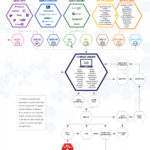How World Events are Changing Business Models
Prior to 2020, you probably could not imagine an alcohol producer manufacturing hand sanitizer or an underwear maker creating masks. Both are bi-products of unpredictable circumstances that demonstrate how some business decisions are out of the hands of management. Some are dictated by trends, economic changes, and most recently, health concerns. And now we have a new concern to navigate with our ports jammed up with ships waiting to dock.
How you look at your inventory and classify your best sellers and least profitable items, i.e., ABC inventory analysis performed on spreadsheets or with software like SOS Inventory, may evolve to reflect the products that can be manufactured with local raw materials or ingredients.
We have been facing importing challenges for some time now. Initially, the tariffs imposed on Chinese products drove up the cost of importing and led manufacturers to look towards alternative sources in India and other countries. While some industries benefitted from the tariff increase, like the American steel industry, others have had ongoing difficulties with rising costs and availability such as we are witnessing with the car industry’s ability to satisfy orders due to missing chips.
The cost of shipping containers has gone through the roof, from under $5,000 to over $20,000 in a year’s time, driving down profits and compelling businesses to vet sources closer to home.
Congestion at the ports is our most recent problem, visibly impacting major city grocery store shelves and discount chain stores just as we head into the holiday season when demand rises for many businesses. There has been quite a bit of finger-pointing, some blaming the truck drivers, some blaming the port workers, and others blaming the administration.
At the end of the day, it doesn’t matter whose fault it is. Your business must react to compensate for lost sales or increased prices.
- For starters, make sure your customers are aware of delays. Your loyal customers will be willing to wait if your communication is regular and consistent. Leaving someone wondering when a shipment is going to arrive and not being honest about delays upfront can cost you business.
- Update your shipping policy to reflect the longer lead times so new customers know what to expect before ordering.
- Network with other businesses that require similar materials. You might be able to negotiate better rates if you combine your orders, lowering the cost by volume on higher priced alternatives.
- Update your reorder points to account for longer lead times.
- Create your plan B for labor disruptions ahead of time.
- Consider if a variation of your product be produced with alternative materials.
- Consider whether another vertical offers new opportunities for your product.
- Test out new marketing channels.
At a time when businesses tend to increase their orders to meet expected sales, those that cannot get the items they need due to longer lead times, higher costs, or lack of availability will miss out on sales when they earn most of their income for the entire year. Come fourth-quarter earnings, we will see the widespread loss of profits across many industries. Some of the smaller businesses may not be able to survive.
Everything that has happened over the course of the last few years is indicating that businesses can minimize disruptions by finding suppliers closer to home. Whether or not the move can be beneficial will depend on the difference in cost between buying locally and importing and if paying more is worthwhile. If the result is lower profit on the sale of more items, it could be a sustainable business model. If the difference in cost makes the product unprofitable, it may be time to consider changing the products offered for sale. No doubt, every business will endure some type of change impacted by supply chain disruptions. We will have to wait to see if the problem subsides with a policy change for port workers or truck drivers. If nothing else, this is the moment when the strongest businesses will survive. Those that evolve to adapt to changes will be tomorrow’s industry leaders.
We’ve seen restaurants become creative, offering weekly pre-cooked meals delivered to customers’ homes. We’ve seen champagne companies offer mail delivery to virtual wedding attendees. There is innovation out there to be found and there’s nothing like a difficult situation to make you find it.











